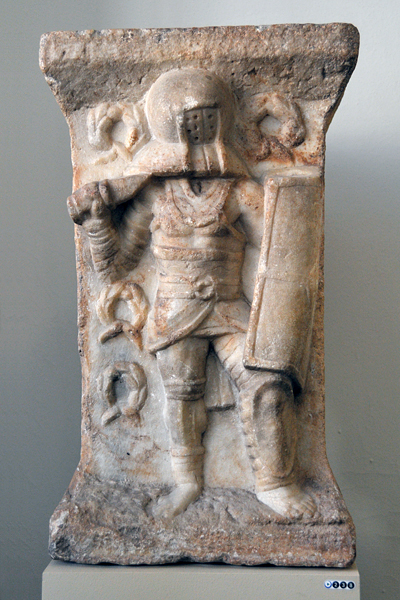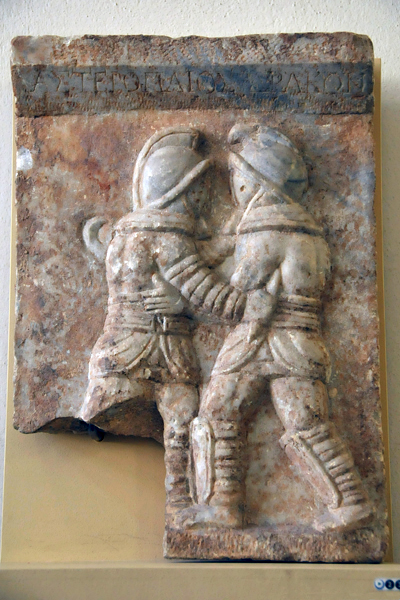
This marble relief, which dates from the third century AD, shows the later form of equipment worn by the provocator. Rather than the broad neck and cheek guards of the Augustan period, the visored helmet now has no crest or brim, and comes down farther over the neck and sides of the head. A distinctive feature of the provocator is the partial breastplate (cardiophylax) buckled across the bare chest (here it is crescent shaped rather than rectangular). The gladiator, who is surrounded by victory wreathes, wears a folded loincloth supported by a broad belt. The exposed arm is protected by a manica and the left leg by a greave that comes just above the knee. This allowed a smaller shield, which is curved and reinforced by ribs. The weapon is a short sword with a straight blade. Like the equites, provocatores are depicted as fighting only their own kind.

This companion piece gives the name of the gladiators: Asteropaios, who likely is fighting as a murmillo (notice the distinctive eye gratings), and Drakon, a thraex (one can recognize the equally distinctive helmet, pair of greaves, and curved blade of the sword). At this point in the combat, both men have lost their shields and are fighting hand-to-hand, the murmillo slipping his blade under the armpit of his opponent.
Possibly from Ephesus, both reliefs are in the Antikensammlung (Berlin).